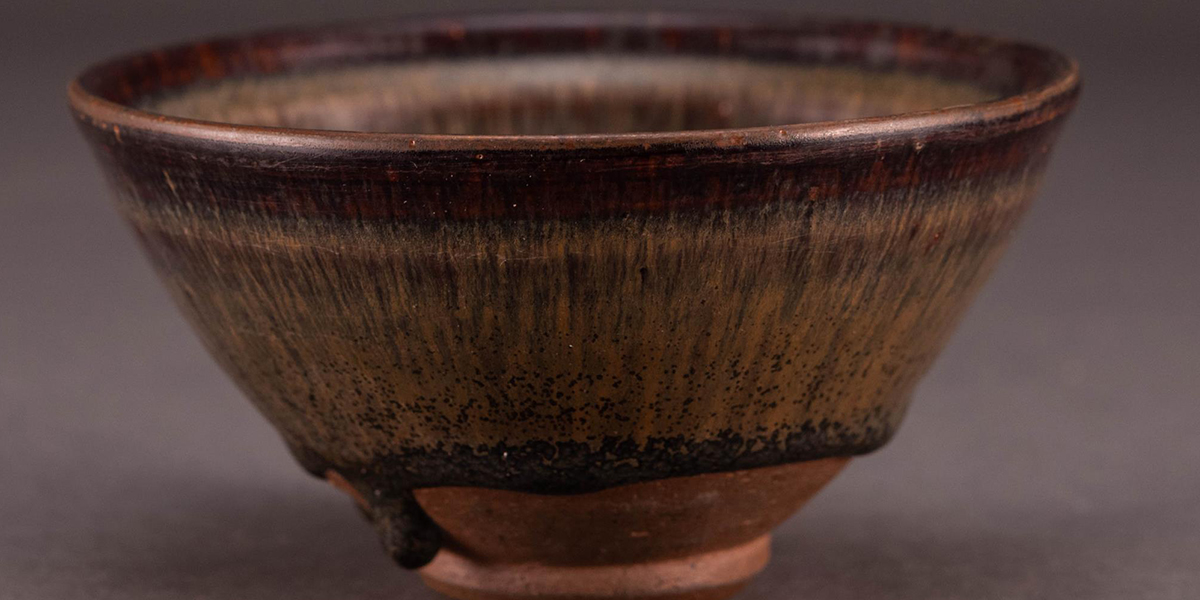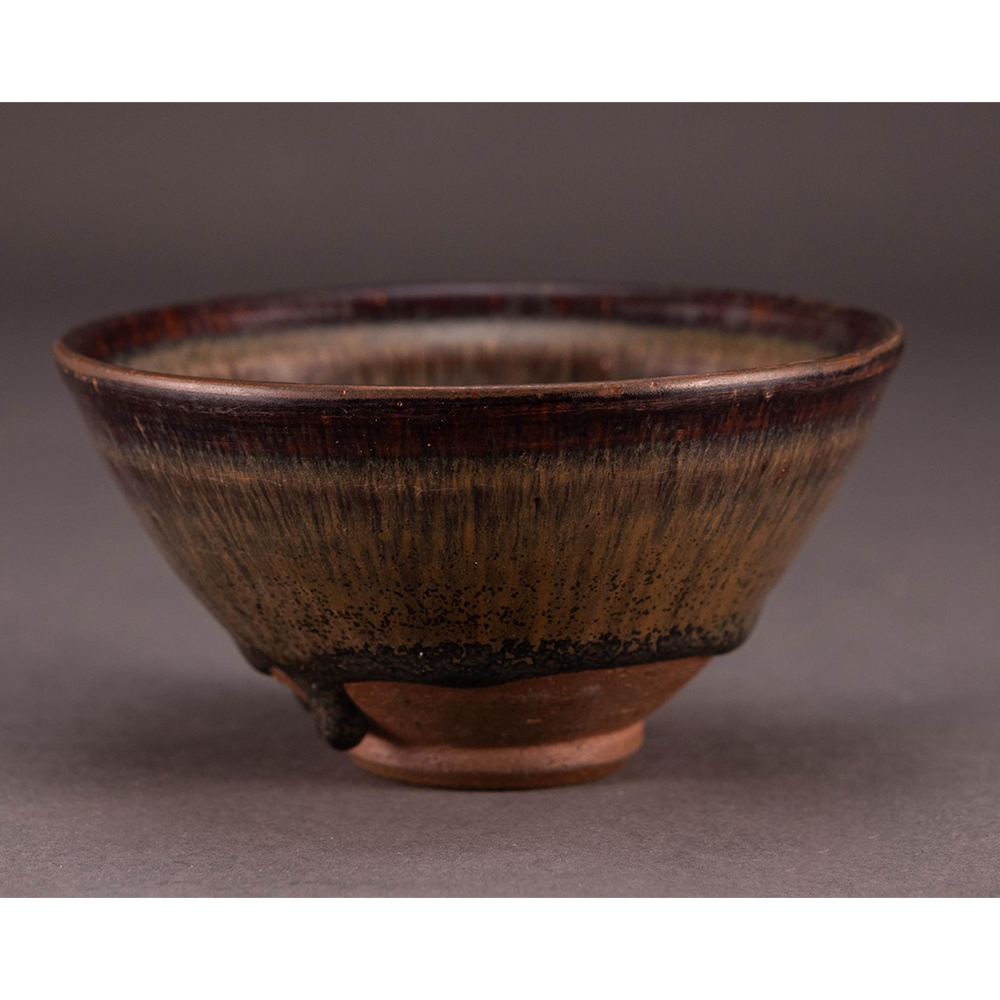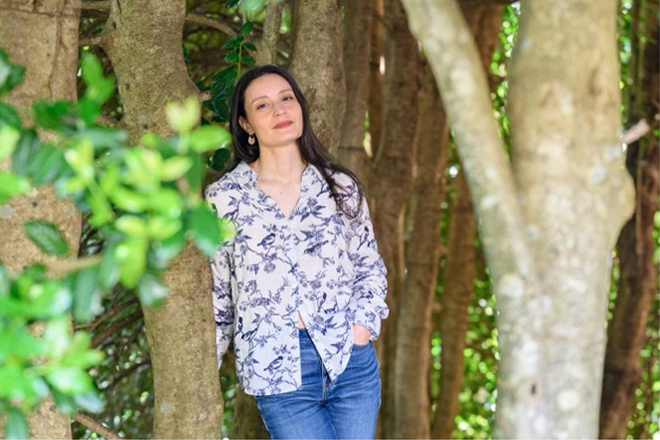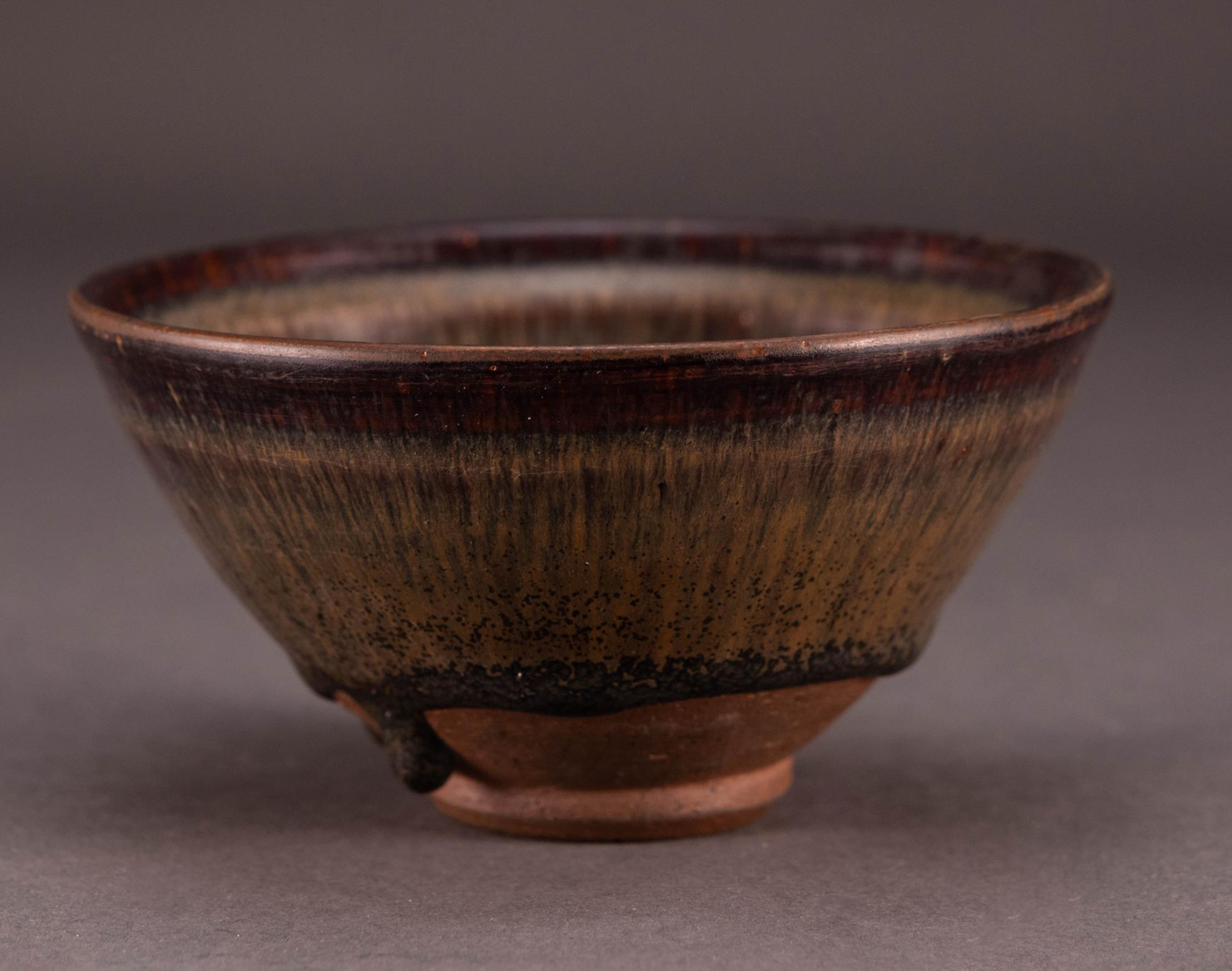Luminous Layers: Glazed Surfaces and the Art of Reflection


On View: September 3, 2025 – May 31, 2026
Location: Reeves Museum of Ceramics
Image (left): “Hare’s Fur” Tea Bowl, Jian kilns, Fujian Province, China, 1100–1300, Stoneware, W&L Art Museum, Gift of Jay Crawford, 2020.10.10
Luminous Layers: Glazed Surfaces and the Art of Reflection pairs historic Chinese ceramics with Cloud-Dragon Collage 4 (2023), a recent museum acquisition by contemporary artist Kelly Wang. From the streaked, lustrous depths of a Song dynasty tea bowl to Wang’s resin-layered surfaces that ripple with light, the installation reveals how makers have transformed glazes and layered media into active fields of reflection and depth. Placed in the museum’s atrium, the display mediates a dialogue between two-dimensional works and ceramics shown in the surrounding galleries, inviting visitors to consider how surface itself becomes a space of conversation across media, space, and time.
The exhibition is curated by Fosca Maddaloni-Yu, the Euchlin D. Reeves Curatorial Fellow in Ceramics.

Fosca Maddaloni-Yu
